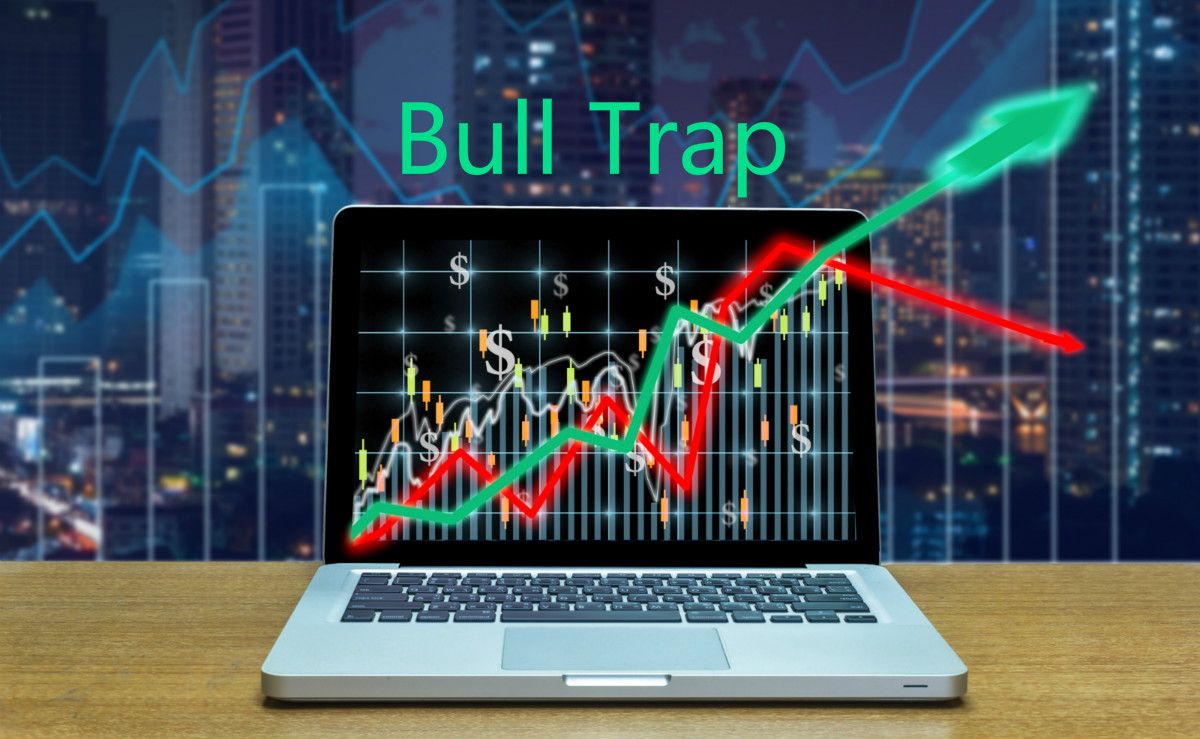Improve Your Trading With The Supertrend Indicator

The Supertrend indicator is a powerful but underused technical trading tool.
Just like its name suggests, it is a trend-following indicator, meaning that it will never give you sell signals when you have an active uptrend. Also, it can be used in trading almost any instrument on any timeframe as long as the broker provides a trading platform that supports it.
Unlike many other technical indicators, this tool has not been used, mainly because most traders don’t know it, or they don’t understand it.
Today, we are going to look at the Supertrend indicator and understand how it works as well as how you can use it to improve your trading.
How It Works?
Working with the indicator is quite simple since all you need to do is to look at it.
When loaded on a chart, it appears like the moving average indicator. However, unlike the MA, it changes color depending on the prevailing trend.
Below is a chart with the Supertrend indicator:
As you can see, the indicator is quite similar to the moving average. There are a few differences such as the distance from the price, the behavior when crossing over, and the change of color.
When you open the indicator’s properties, you will see two options:
● Super Trend ATR Period, and
● Super Trend Multiplier
Good for you if you know what the ATR is because you already have an idea of how this tool works.
ATR
The Average True Range, commonly known as the ATR, is an indicator used to measure the volatility of a market.
It takes into consideration the previous high and close of a specified period in its calculations.
So, when your ATR period in the Supertrend indicator is set at “14”, then it means the indicator is looking back at the highs and lows of 14 days.
That said, when a market is highly volatile, then the ATR will be high. On the other hand, if there is little volatility, then we ATR will be low.
Now, the Supertrend combines the ATR with a “multiplier” to detect the changes in trend direction.
The good thing is that you don’t have to memorize the complex formulas used in creating the indicator since it does all the work for you and displays either a red or green line.
Buy and Sell Signals
The Supertrend indicator is more of a lagging indicator as it depends on current price action to give signals. In short, it does not predict the future behavior of price. Rather, it shows you what is happening at the moment.
Using this indicator is quite simple:
→ When the color changes to red, then it is telling you to open a sell trade as the trend is currently down
→ When the color turns to green (or lime), then it means you should open a buy trade since the trend is now going up
It is that simple!
Let me burst your bubble: in as much as the indicator seems too promising, it is not the holy grail of trading. There is none.
Once you load it to your chart, you will realize that there are times when it captures the trends very early. On the sadder side, sometimes, it gives you a signal when the trend has happened, so you miss the juiciest moves.
What this should tell you is that it is impossible to be profitable by following the Supertrend indicator blindly. In short, you should have a secondary means of filtering the signals so that you only pick the ones with high winning probabilities.
In the chart below, we are going to see what would happen if we took all the signals that the indicator gave us.
As you can see, the indicator was giving us good entry signals most of the time, but the exits somehow came late after we had lost most of the pips made.
For instance, even in places where we ended up with 0 pips in profit, the market had given us tens or even thousands of pips before reversing and closing.
Bearing in mind that the above chart covers two months, making 66 pips and losing another 16 means we would have made 50 pips.
While this is still better than making a losing trade, it is still painful to have lost hundreds of other pips.
Therefore, while the Supertrend indicator is a good tool, it is not commendable to use it on its own.
Best Settings to Use
Just like any other indicator, the Supertrend has no fixed or definite setting that works for everyone all the time.
I would say the setting you choose is up to you.
Typically, the indicator has a default setting of 10 ATR period and 3.0 Multiplier.
If you reduce the settings too much, then the indicator will give a lot of signals, in which most of them will be false.
Similarly, if you raise the numbers too high, the indicator will give fewer signals, meaning you might lose a lot of good trading opportunities.
As such, start trying the indicator with its default settings and play around with them until you find the best ones that work for you.
Best Timeframe to Use
Just like the settings, it is up to the user to decide which timeframe to use the Supertrend indicator on.
If you are a day trader, you can use it on the M5, M15 or M30 charts.
As for swing traders and position holders, they can use the other timeframes starting from H1 and up.
It can also be used on multiple timeframes where you place it on a larger timeframe then go down to a lower timeframe and use it for entry and exit signals.
It is important that I mention what I have seen from many traders that have used this indicator; that the lowest timeframe you should use is the 15-minute chart.
True to their word, if you just skim over an M5 chart with the typical Supertrend on it, you will see that there are tens of signals. Most of them are false and even where the trend sustains itself a little; the accumulated pips are insignificant to cover the losses.
On the brighter side, when you load it on a higher timeframe such as the H1, you will notice that there are fewer signals. You will also notice that the winning trades are bigger than the losing ones, meaning that with a proper strategy, then you can always remain in the positive end.
Where to Find It?
Some trading platforms such as the MT5 have the Supertrend included in the in-built indicators section.
For others, such as the older MT4, the indicator is not included in the program when installing it, not unless your broker has included it.
If your trading platform does not have it, you can download the indicator online and include it.
The indicator is now popular, so coders have made a version for almost every trading platform including Ninja Trader, eTrader, Trade Station, MT4, and so on.
Just search for it online.
Sample Strategy using the Supertrend Indicator
Always remember that indicators should never be used as the ultimate trading decision-makers. Only use them to assist you in spotting potential opportunities or confirming signals that you have identified using your primary way of analysis.
That said; this tool can be combined with almost any other trading approach.
In this section, we are going to look at a trading strategy that uses two settings of our Supertrend indicator.
〉 Load the Supertrend tool into your chart
〉 Leave the settings at default (10, 3). This indicator will be giving us the entries.
〉 Load the Supertrend indicator again
〉 This time, set the period to 32 and the multiplier to 9. You can change the color or width of this bigger indicator so that you can tell them apart. This instance of the indicator will be giving us the main trend direction.
Below is a chart with this setup:
To trade with this strategy:
〉 Wait for the main (bigger) Supertrend version to change from red to green or green to red. In our case above, we had it changing from red to green.
〉 If it changes from green to red, wait for the smaller Supertrend version to turn red. Then open a sell trade. In our chart, we were expecting a buy trade. So, when the smaller Supertrend turned to green, we opened a buy trade.
〉 In case you miss the first entry, you can wait for other opportunities using the smaller Supertrend since it will keep changing color as the trend continues.
〉 Place your stop loss on the previous low.
〉 You can hold the trades until the price comes back and touches or crosses the main Supertrend.
In Conclusion…
The Supertrend indicator is a simple, easy-to-use but a very effective volatility-based trading tool.
It follows the trend direction of the price and gives early entry and/or exit signals. If used properly, it can become a trader’s valuable tool for making decent income off online trading including forex, stocks, indices, and so on.
The trader should practice with the indicator until they get the best setting and timeframe to apply.
If coupled with proper discipline and risk management, the Supertrend indicator can turn a losing trader into a consistent winner without the need for tons of mind-boggling calculations and methods.
* The content presented above, whether from a third party or not, is considered as general advice only. This article should not be construed as containing investment advice, investment recommendations, an offer of or solicitation for any transactions in financial instruments.
- Original
- Trading Analysis


Risk Warning: Trading may result in the loss of your entire capital. Trading OTC derivatives may not be suitable for everyone. Please consider our legal disclosure documents before using our services and ensure that you understand the risks involved. You do not own or have any interest in the underlying assets.


.jpg)


